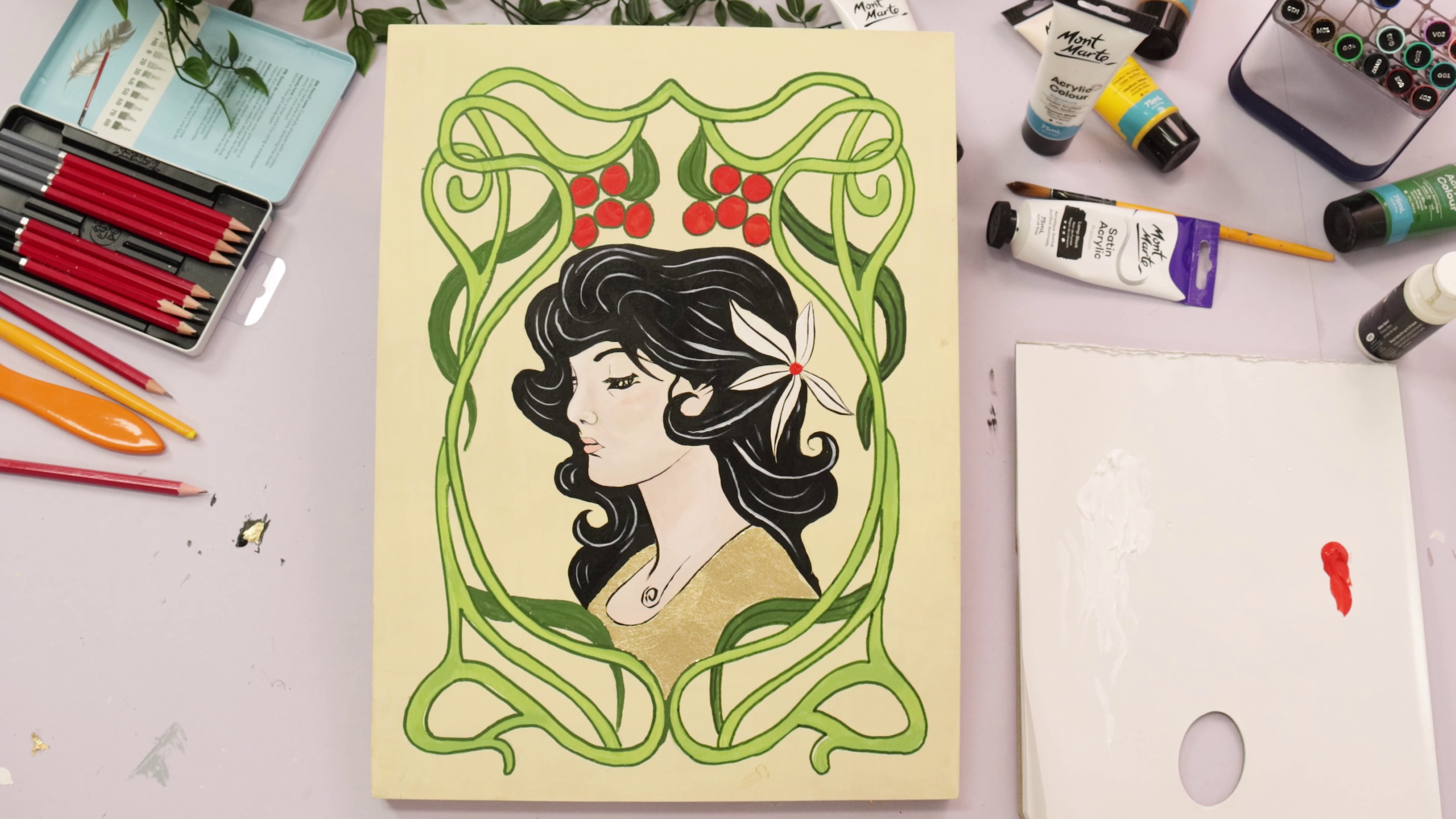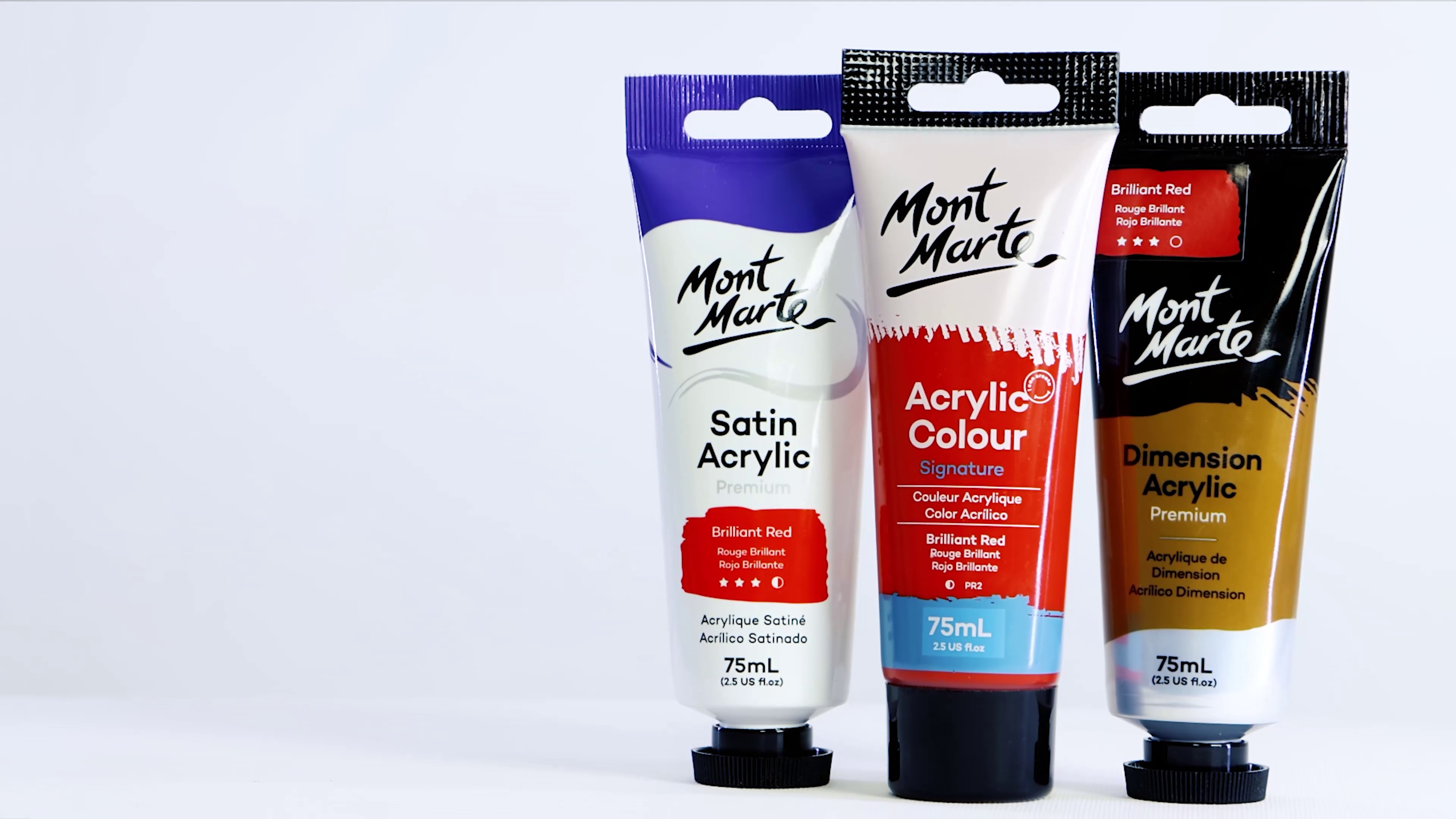When it comes to making different textures in art, there are lots of creative options you can give a go. The texture of paintings can be changed by using different mediums either in the paint itself, applied before, or layered on top afterwards. We’re diving into a bunch of products and approaches you can use to create texture in your next project, so read and watch on to find out more!
Gesso
Using gesso for texture can create different effects depending on when you use it, and which kind you use. An ideal gesso for texture is our Gesso Premium as it’s highly viscous and holds its shape when applied to your painting surface thickly. To create a dynamic effect, we recommend using it as an undercoat, so that when you brush your paints over the top they are layering on a textured canvas. Luckily, we’ve got a handy how-to video you can check out to run you through using gesso and creating texture! Our Gesso Premium comes in black and white shades for all sorts of projects and art styles.
Impasto
Mont Marte Impasto is a great medium to add to acrylic paints for different texture effects. It thickens paint, helping it to retain the shape of your brush strokes as you apply them to your painting surface. This adds definition, allowing you to layer paint thickly so it’s raised and 3D. Impasto may just be what you’re looking for to make your waves leap off the page or define the petals of a floral arrangement still life.
An added benefit is that our impasto doesn’t change the colour of your paint. It dries clear so it doesn’t pale or soften your colours when mixed. If you’re going to use lots of it, it will create a bit more translucence in the colour of your paint (rather than changing the hue). All in all, it has little effect on your paints other than thickening them for a more defined texture.
Crackle Paste
Using our Crackle Paste art medium underneath acrylic or oil paints can be a great way to create texture. By applying a consistent, thin layer of the paste on your painting surface and allowing it to dry, a cracked, dimensional undercoat will form that will change the way your paints look on top. For a more dramatic effect, spread on a thin layer of either acrylic paint or PVA glue and allow it to dry before applying the paste. An acrylic paint undercoat provides a noticeable effect, while the PVA is great for increasing the size of cracks.
If you want to find out more about the paste before using it, we have a handy FAQ article that dives into commonly asked questions about the medium.
Modelling Paste
Our Modelling Paste is a chunky medium that’s awesome for creating layered texture underneath your paints. You can spread it thickly onto the surface of your canvas, allow it to dry, and paint over it with either acrylic or oil paints for a textured undercoat. For defined brushstrokes, it can also be mixed into acrylic paints to create thick, pastel paints that hold their shape as they are applied.
You can also try sticking small objects or physical details into the paste once it’s applied to hold them to the canvas, such as little pebbles or leaves. It will bind them to the surface, keeping them in place as the modelling paste dries, creating an interesting mixed media piece. If you’re looking to get the most out of this medium, check out our 10 modelling paste tips!
Varnish
Instead of mixing with your paints or sitting underneath them, a varnish is applied on top of a project once it is dry. Using varnish can change the texture and finish of your painting, depending on which one you choose. We carry a range of different varnishes, including our Iridescent Varnish, Gloss Acrylic Varnish, and Gloss Clay Varnish. You can also finish your acrylic paintings and artwork with our acrylic mediums (matte and gloss finishes available) to create different effects.
Gloss and iridescent varnishes can be used to create movement and dimension over a seascape, while a matte finish could add a fade effect to a dim forest scene. To help you use and understand varnish and finishing mediums, we’ve answered some commonly asked questions in a FAQ article.
Other than changing your painting’s final texture, varnishes typically make the colours in your artwork more vibrant and help to protect the paint from dust and dirt as they age. Varnishing will also waterproof clay, canvas, and wood, meaning your works can last longer on display.
Dimension acrylic
Our Dimension Acrylic range is ultra-thick so it can be applied with brushes and palette knives, holding its shape when it dries. Rather than having to mix in a medium to create thick acrylic paint, our Dimension selection is designed to be smooth flowing with a high viscosity from the get-go. It’s ideal for adding texture and definition to your project and can be thinned with water or acrylic mediums for glazing and watercolour effects. Choose from 48 colours to create all sorts of textures for your next project!
Oil paints
Kind of like our dimension acrylic range, oil paints are naturally very thick and will hold their shape as they dry on your canvas. They still have a smooth, buttery consistency for easy application, but if you apply them in solid layers or defined strokes, they will hold that shape. Due to their slow drying time, you can move and manipulate the paint while it is still wet, changing the texture to suit your subject matter.
For thinner, or more translucent effects, thin the paints with oil mediums. This will help when creating glaze and watercolour textures, deepening the dimension of your layers. We carry four kinds of mediums that are ideal for adjusting the viscosity of your oil paint, including Amber Gel, Refined Linseed, Thickened Linseed, and Safflower oils. Amber Gel is great for making your paints more translucent without affecting how thick they are, allowing dense texture with less opacity.
Texture tools
When you’re working with thicker mediums to create dimension, texture tools can come in handy! This range includes, combs, rollers, foam tools, palette knives, and more. While the medium or paint is still wet, use the tools to make patterns and designs, building up the paint, or drawing lines into it. Try rolling out a pattern across the canvas or using combs to carve defined lines into your paint. Our video about how to use gesso shows some of these tools in action so you can see the effect unfold!
Mixed media
Why restrict yourself to one medium – you can make different textures in art by combining lots! Whether you’re ripping Kraft Paper to add layers to your page, sprinkling glitter across your oceans, or gluing on real fabric for your subject’s clothes, multimedia projects can be a great way to add dimension. Some of the methods we’ve already discussed involve more than one medium, such as creating an underlayer of Impasto texture or gluing small objects to Modelling Paste. Just remember that your creativity knows no bounds and experimenting is all part of the process. Get inspired to try a mixed media artwork by checking out artist Hsin Lin’s acrylic beach painting.
Now you know some of the best products and ways to create cool textures, we hope you’re excited to explore them and give them a go!
We’d love to have inspired you to start a new project, return to an old one, or whip up unique ways to create texture.
If you do make something, #montmarteart or tag us @montmarteart on Instagram or Facebook. We’re excited to see what you come up with!
Looking for more? Check out our Inspo blogs to spark your creativity. If you need any of the products mentioned in this blog, jump online to check out our range of art mediums, paints, and texture tools.





























